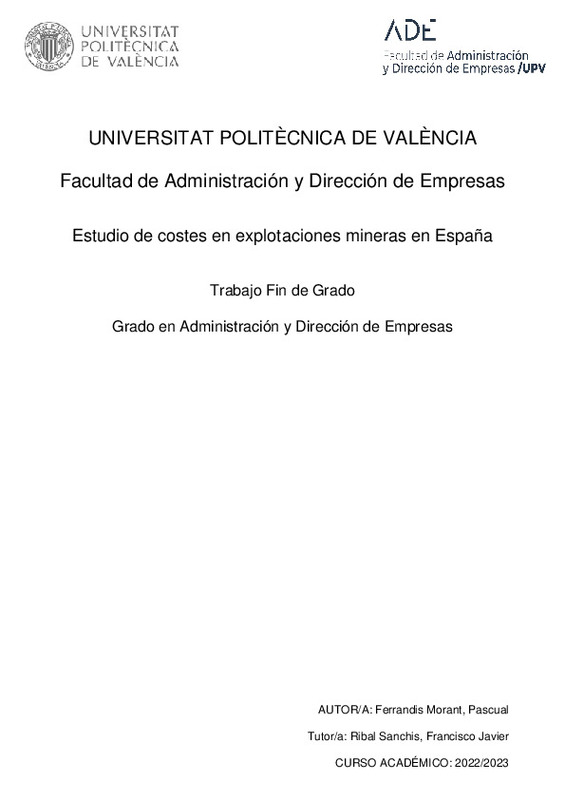|
[ES] Este trabajo de fin de grado busca analizar la estructura de costes de la industria extractiva en España, tanto a nivel de los subsectores existentes como a nivel de las diferentes sustancias minerales.
Para ello se ...[+]
[ES] Este trabajo de fin de grado busca analizar la estructura de costes de la industria extractiva en España, tanto a nivel de los subsectores existentes como a nivel de las diferentes sustancias minerales.
Para ello se construirá primero una base de datos con la estructura de costes de explotación para ambos niveles. La fuente de datos principal para la elaboración del trabajo es la Estadística Minera de España para el período de 2016 a 2020. Esta es la principal fuente de información de los resultado económicos de las explotaciones mineras en España.
Con el uso del lenguaje de programación R, se crearán unas fichas visuales para facilitar el entendimiento de los costes de explotación y de sus componentes para cada subsector y mineral; a la vez que se realiza el análisis para determinar la estructura de costes de operación. En este análisis se clasificarán los costes en función de en qué se destina el dinero y respecto a cómo varían en función de la actividad económica. Para ello se hará uso de diferentes modelos estadísticos.
También se estudiará la variación de la estructura de costes a lo largo del periodo, calculando el ratio de inversiones y comentando el margen operativo; y se pondrán en valor aquellos minerales que cuentan con alguna situación anómala en su estructura de costes.
[-]
[EN] This final degree project aims to analyze the cost structure of the extractive industry in Spain for each existing subsector and for all the mineral substances extracted. In order to achieve this goal, a database will ...[+]
[EN] This final degree project aims to analyze the cost structure of the extractive industry in Spain for each existing subsector and for all the mineral substances extracted. In order to achieve this goal, a database will be created with the cost structure of exploitation for both levels of the study. The primary data source for elaborating the work is the Spanish Mining Statistics from 2016 to 2020, which is considered the primary source of information on the financial results of mining operations in Spain.
Using the R programming language, visual tabs will be created to facilitate the understanding of the operating costs and their components for each subsector and mineral. They will help in the performance of the analysis to determine the operating cost structure. This analysis will classify costs according to where the money is spent and how they vary according to economic activity. For this purpose, different statistical models will be used.
Finally, the variation in the cost structure throughout the period will also be studied by calculating the investment ratio and discussing the operating margin. Furthermore, minerals that exhibit any abnormal situations in their cost structure will be highlighted.
[-]
|







